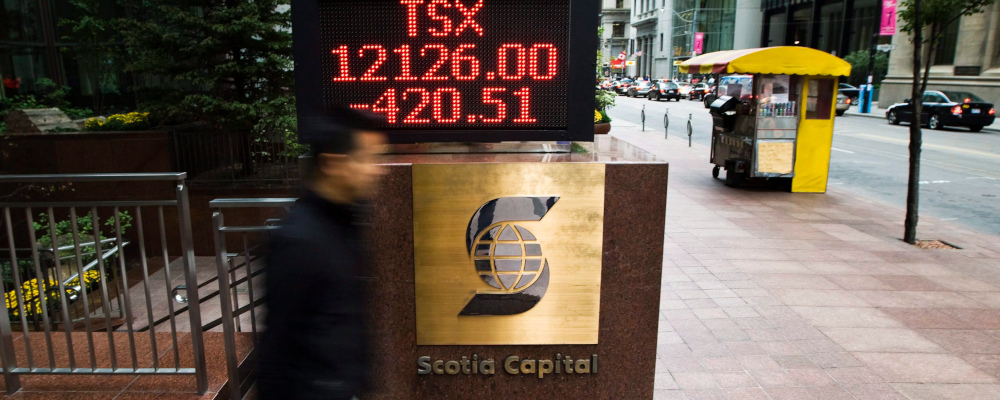Trevor Tombe has laid out a vigorous defense of Chrystia Freeland’s Budget 2024 decision to hoist capital gain inclusion rates for corporations, trusts, and high-income individuals. In his essay, the good professor illustrated the mathematics involved when a corporation incurs a capital gain and then passes the proceeds on to its shareholders. The example depicted the concept of “integration,” which has been a hallmark of the Canadian tax system for decades. Integration refers to the idea that the corporate and individual tax systems should be indifferent to whether an investment is held in a corporation or directly by the taxpayer. The same concept applies to dividends; it is the reason why the dividend tax credit exists. Without integration, some investment strategies would be favored over others so conceptually, it is pretty difficult to argue with.
It is when he takes the concept one step further that academic theory collides with real-world investment decision-making. Tombe goes on in his piece to rely on the old economic canard that “a dollar is a dollar” and the economy is indifferent as to whether it is collected from an individual or a corporation. In other words, the income tax dollar collected from an employee should be taxed at the same rate as the capital gain earned by the investor in order to avoid advantaging certain taxpayers over others. This line has been repeated many times by academics and wage-earners in the wake of Budget 2024.
That indifference may well be true for the Canada Revenue Agency, but it is certainly not true for the entrepreneurs who start companies or the investors who finance them.

The company that I lead has been one of Canada’s most active early-stage investors over the past decade. Last week, we made our one-hundredth investment in a seed-stage technology company; the large majority of these are located in Canada. We treat this business seriously and for our efforts, we have been recognized with a number of awards including being named Canada’s Angel Investor of the Year for 2019.
There are three main reasons why the dollar that we earn from our investment activity is not the same as the dollar earned by a typical employee. These boil down to risk, liquidity, and the time value of money.
- Risk. We make our investment decisions knowing that every individual company in the asset class has a 75 percent to 80 percent chance of failure. Loads of studies show that the large majority of early-stage tech companies fail to return their investment capital. Investments in the minority of companies that succeed have to be sufficient to carry the load of multiple failures. An employee earning regular income in a job bears no equivalent risk.
- Liquidity. When we invest in a startup, we expect that the holding period will be between seven and ten years. Over this long period of time, it is very rare to have the opportunity to swap our position for cash; we are truly locked in until the point where an exit is achieved even if we identify better opportunities for the cash. This contrasts starkly with the employee who will see cash for his or her efforts within two weeks.
- Time. With a holding period of a decade or so, it is very easy to see how inflation erodes the real value of an investment even when nominal returns may look marginally acceptable. Let’s say inflation averages 3 percent over the ten-year period. At the end of the ten-year holding period, the investment would have to increase in value by nearly 75 percent just to keep pace with inflation. In this illustration, a $100 investment that becomes worth $175 has produced no real return, yet the capital gain tax is levied on the nominal return (ie. $75). The investor owes $25 in tax on an investment that has produced no real return at all; indeed, the tax has actually put him into a loss position. Again, this does not happen to an employee, who is paid every two weeks for labour supplied and bears no such risk.
For us, investing in early-stage companies is exciting and rewarding, but it is purely profit-seeking. While this is not a charitable activity, the investments that we make along with our partners do have the delightful side effect of creating thousands of jobs and hundreds of millions of dollars of annual economic activity. The creation of economic opportunities has always depended first and foremost on the prevalence of creative entrepreneurs and those that invest to support them. All net new jobs come from startups. It’s the best recipe for economic development mankind has ever invented, and 13 million private sector jobs in Canada owe their existence to this sort of activity.
But ask yourself why anybody would ever take on the risks associated with early-stage investing if they were subject to the top marginal Canadian tax rates which exceed 50 percent in most provinces. The government has a larger claim on your efforts than you do! If your choice is between a GIC paying 5 percent per year with no chance of loss or a startup with an 80 percent chance of failure that might produce a multiple of that in ten years and then be subject to the same rate of tax on a nominal return, you probably would take the GIC most of the time.
Another economic adage is that “if you want less of something, tax it more.” That is what Freeland and company have done this week. Canada is already experiencing a well-documented productivity crisis, with GDP per capita declining over the past several quarters. By reducing capital availability, this latest budget will only accelerate that ugly trend.




